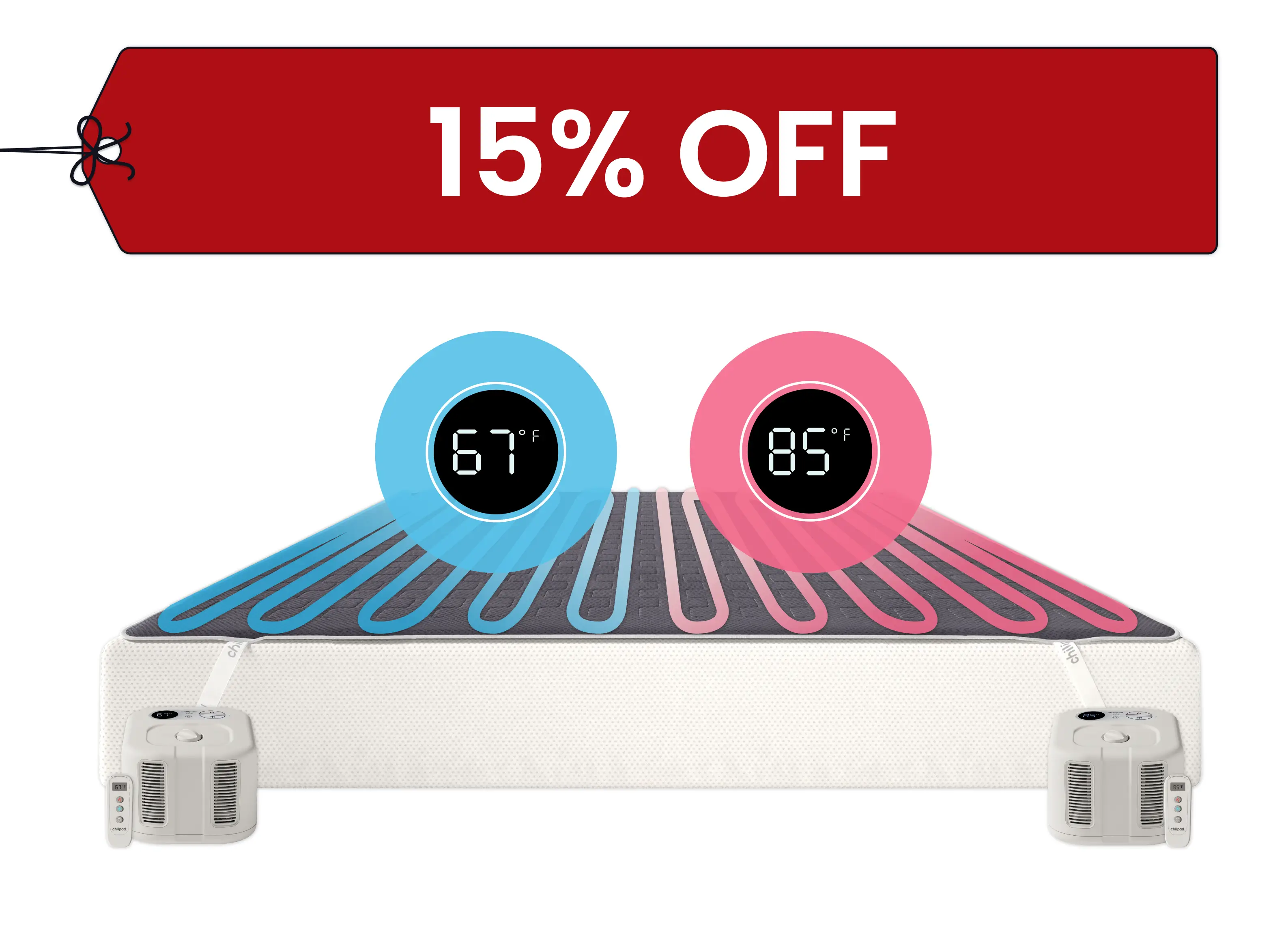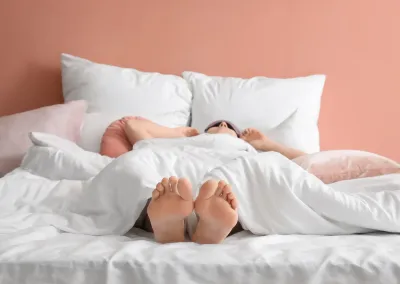
The weather is changing, and your sleep settings for your cooling mattress pad should be too!
While it's very likely that your bed is inside the confines of your home, it's still prone to the seasonal temperature changes that the rest of your likely house experiences. And just like you change your wardrobe to accommodate the seasons, it's important to make a few adjustments to your sleeping environment as well.
Why?
Temperature plays a role in sleep regulation. In many cases, it directly impacts the quality of your rest - as in how quickly you fall asleep, how deeply, and how long.
And it makes sense, right? How many times have you woken up tossing and turning in your own sweat, kicking your sheets, or flipping your pillow? Probably too many to count.
When it's too hot or too cold, your body struggles to maintain a normal internal temperature, which can, in turn, make it difficult to stay asleep or achieve deep, restorative sleep. This is something backed by research.
A recent study (1), “Rising temperatures erode human sleep globally” published in a Cell Press Journal —a top-tier peer-reviewed journal– found that the core body and skin are more responsive to environmental temperatures during sleep.
It concluded this by analyzing data from tens of thousands of participants' smartwatches and wristbands from around the world, taking their sleeping patterns and local weather into account.
In its empirical results, the Danish study stated that adults are likely to fall asleep later, rise earlier, and sleep for less time during hot nights. It also noted that out of all the seasons it analyzed, nighttime temperatures decreased sleep duration the most during the summer months.
Body Temperature & Your Sleep Pattern
Get deeper, more restorative sleep with our cooling mattress pads. Adjust your temperature during any season, ranging from 55-115º, to improve your deep sleep and wake up rested.
But that's not to say warmth is always bad, though.
A particular form of warming can be causatively associated with sleep initiation when at the right time, according to a 2019 review in Frontiers In Neuroscience (2). It noted the unique relationship between sleep and periodic temperature change, finding that direct skin warming for up to four hours, between one and eight hours before going to bed, increases NREM consolidation and slow-wave sleep (SWS), as well as decreases REM sleep.
In both humans and other mammals, direct skin warming can shorten sleep-latency and promote NREM sleep.
We discuss the evidence that body cooling and sleep are more fundamentally connected and that thermoregulatory behaviors, prior to sleep, form warm microclimates that accelerate NREM directly through neuronal circuits. Paradoxically, this warmth might also induce vasodilation and body cooling. In this way, warmth seeking and nesting behavior might enhance the circadian cycle by activating specific circuits that link NREM initiation to body cooling.
Read More: What is REM Sleep & Why is it Important?
This somewhat confusing phenomenon could be compared to the benefits often reported from taking a warm bath or shower leading up to bed. The contrast of the warm skin temperature can counterintuitively result in a drop in core body temperature which can support sleep onset and as this study finds, potentially support deep sleep.
What Is the Ideal Temperature for a Good Night’s Sleep?
The Better Sleep Council, an organization dedicated to promoting better sleep habits, recommends keeping your bedroom at a cool temperature, somewhere in the ballpark of 65-67 degrees Fahrenheit (3) for optimal sleep. But, of course, this can vary based on your specific circumstances.
Tip; For ideas on improving your bedroom to boost your sleep quality, check out our blog, where we share top tips on creating the ideal sleeping environment.
Babies and young children, for example, might require some finessing to find the ideal temperature for your region and circumstances. The National Sleep Foundation points to various studies that range greatly in their suggestions for this group, spanning all the way from 61-72 degrees Fahrenheit (4).
On the other hand, those with certain medical conditions like multiple sclerosis or cerebral palsy may find that a cooler environment helps with pain management and sleep quality.
Other Factors Include:
Local Climate
Room Ventilation
Humidity Levels
Whether You Sleep With a Partner
But it's also important to remember that the best temperature for your slumbers may be non-linear. As we've already noted, some people may find that a warmer environment is preferable for sleep initiation, but once asleep, their sleep performance is better in cooler conditions. To account for this, it may be necessary to experiment with different temperature settings throughout the night.
And while this may be a challenge for traditional bedrooms, it's no problem for those equipped with a cooling function on their bed. There are various options on the market, but a leader in the category comes from Chilipad bed cooling systems with their innovative collection of cooling mattress pads, allowing you to add a cooling function to any standard mattress.
Sleep your way with the Chilipad Dock Pro—cool it down like a refreshing breeze or warm it up like a heated mattress topper. Dial in your ideal temperature and wake up actually feeling rested.
More: Compare our Bed Cooling Systems
It's pretty clear that there is a link between temperature and sleep. But what's also evident is that the ideal sleeping temperature is different for everyone. So whether you prefer it cool, warm, or somewhere in between, make sure to find what works best for you and stick to it. Sleepme is committed to helping you get the best sleep of your life - every night.









